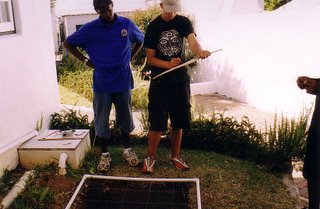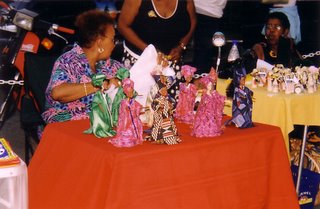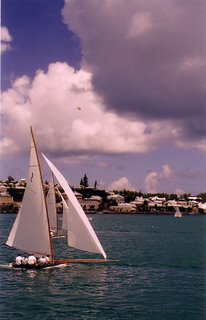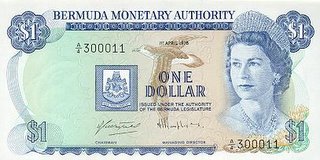Fieldwork in 2003
Project participants might be interested to see some pictures from a previous visit to Bermuda. In July 2003 Emma Dwyer and Barry Devon, then MA students at Bristol University, undertook voluntary work for the Bermuda National Trust. We supervised an archaeology summer camp for local school children and produced a pilot survey of standing buildings and potential sites of archaeological interest in the World Heritage Site of St George's.

We excavated test pits with the children in the grounds of Reeve Court, a Bermuda National Trust property in St George's.

The children were introduced to the methods of stratigraphic excavation and recording. They also washed and marked their finds. You can see some more photos from the 2003 summer camp here
We also produced a database for the Bermuda National Trust, surveying the built archaeological heritage of the town of St George's, and conducting a pilot survey of potential archaeological sites using archive research, map regression and fieldwalking.

This is the Hannibal Lodge in Old Maid's Lane, a listed building within the St George's World Heritage Site.
Our accomodation was in Buckingham, a BNT property in St George's, and on Wednesdays a market would be held in the town for the benefit of the visiting cruiseships.

Gombey dancing is unique to Bermuda and has roots in West African tribal music. It incorporates influences from across the Atlantic; the Caribbean, Native Americans and apparently, the British military.

Souvenir dolls for sale.
Dingy racing is a popular spectator sport; before the construction of road bridges, dingies were used to sail between the islands that make up Bermuda. This race took place in St George's harbour.

The racing dingies are fitted with out-size sails to increase their speed, so a team of six has cram into the vessel to keep it in the water.

It rained once when we were in Bermuda, so I took a photo to prove it!

We excavated test pits with the children in the grounds of Reeve Court, a Bermuda National Trust property in St George's.

The children were introduced to the methods of stratigraphic excavation and recording. They also washed and marked their finds. You can see some more photos from the 2003 summer camp here
We also produced a database for the Bermuda National Trust, surveying the built archaeological heritage of the town of St George's, and conducting a pilot survey of potential archaeological sites using archive research, map regression and fieldwalking.

This is the Hannibal Lodge in Old Maid's Lane, a listed building within the St George's World Heritage Site.
Our accomodation was in Buckingham, a BNT property in St George's, and on Wednesdays a market would be held in the town for the benefit of the visiting cruiseships.

Gombey dancing is unique to Bermuda and has roots in West African tribal music. It incorporates influences from across the Atlantic; the Caribbean, Native Americans and apparently, the British military.

Souvenir dolls for sale.
Dingy racing is a popular spectator sport; before the construction of road bridges, dingies were used to sail between the islands that make up Bermuda. This race took place in St George's harbour.

The racing dingies are fitted with out-size sails to increase their speed, so a team of six has cram into the vessel to keep it in the water.

It rained once when we were in Bermuda, so I took a photo to prove it!


